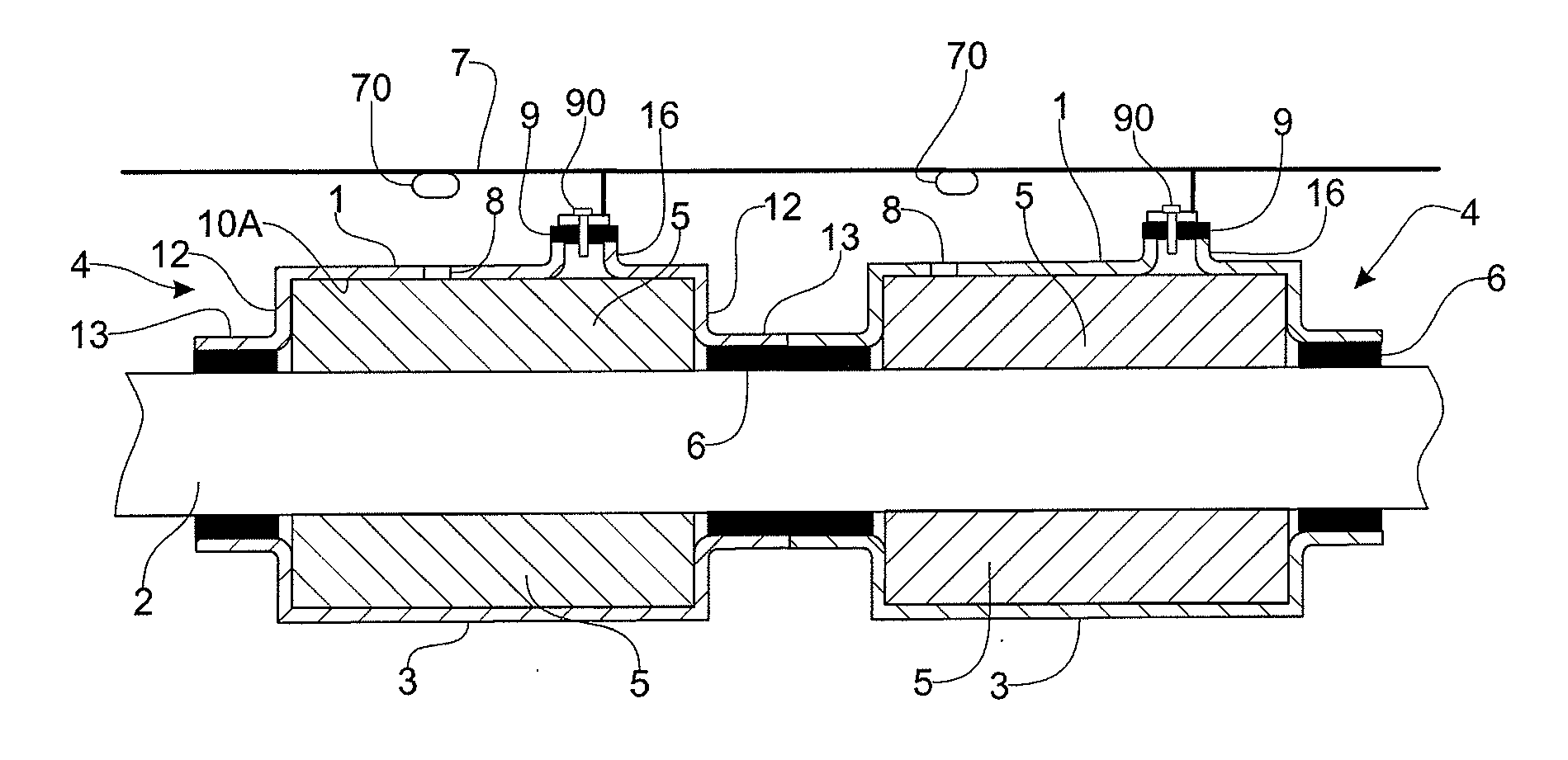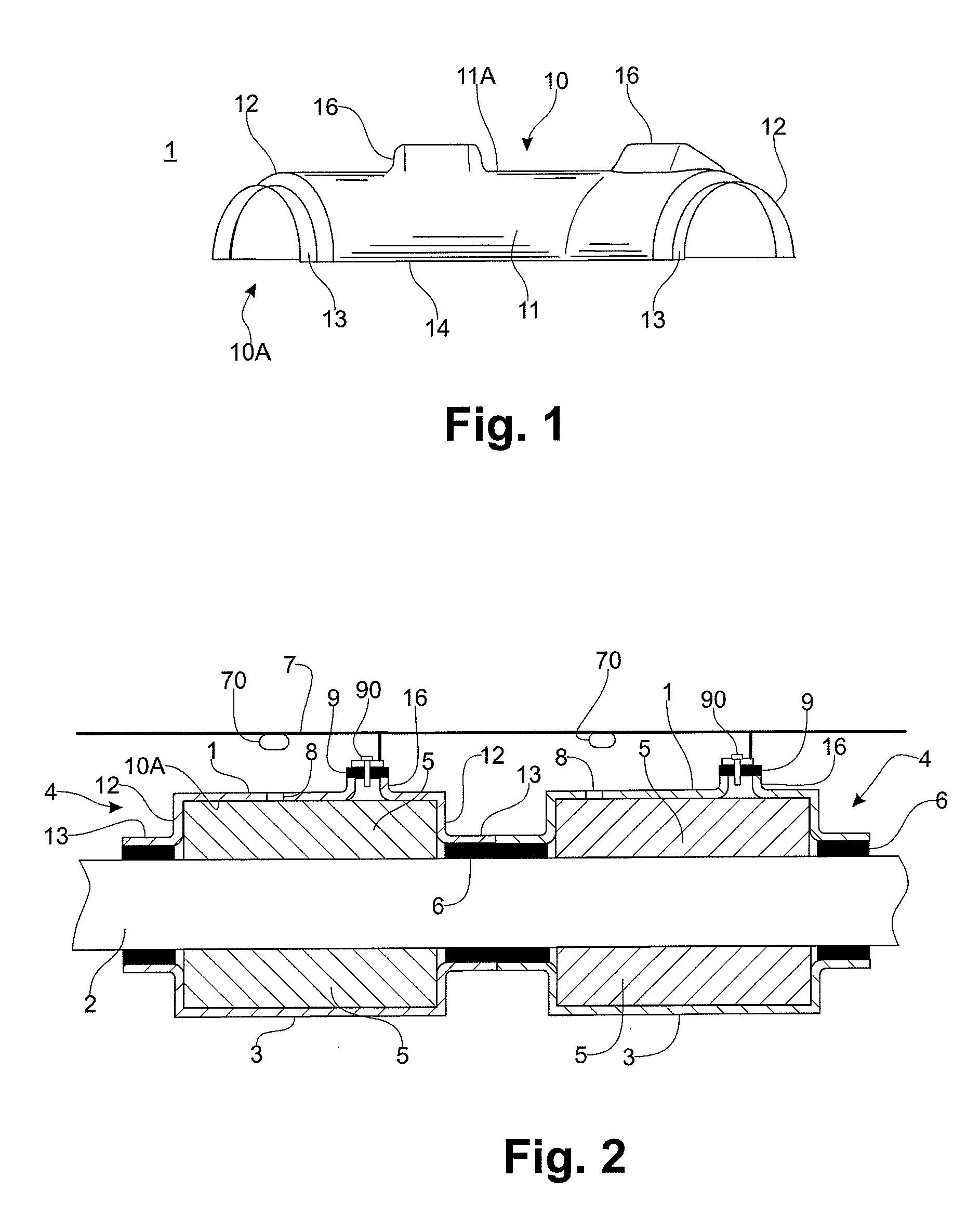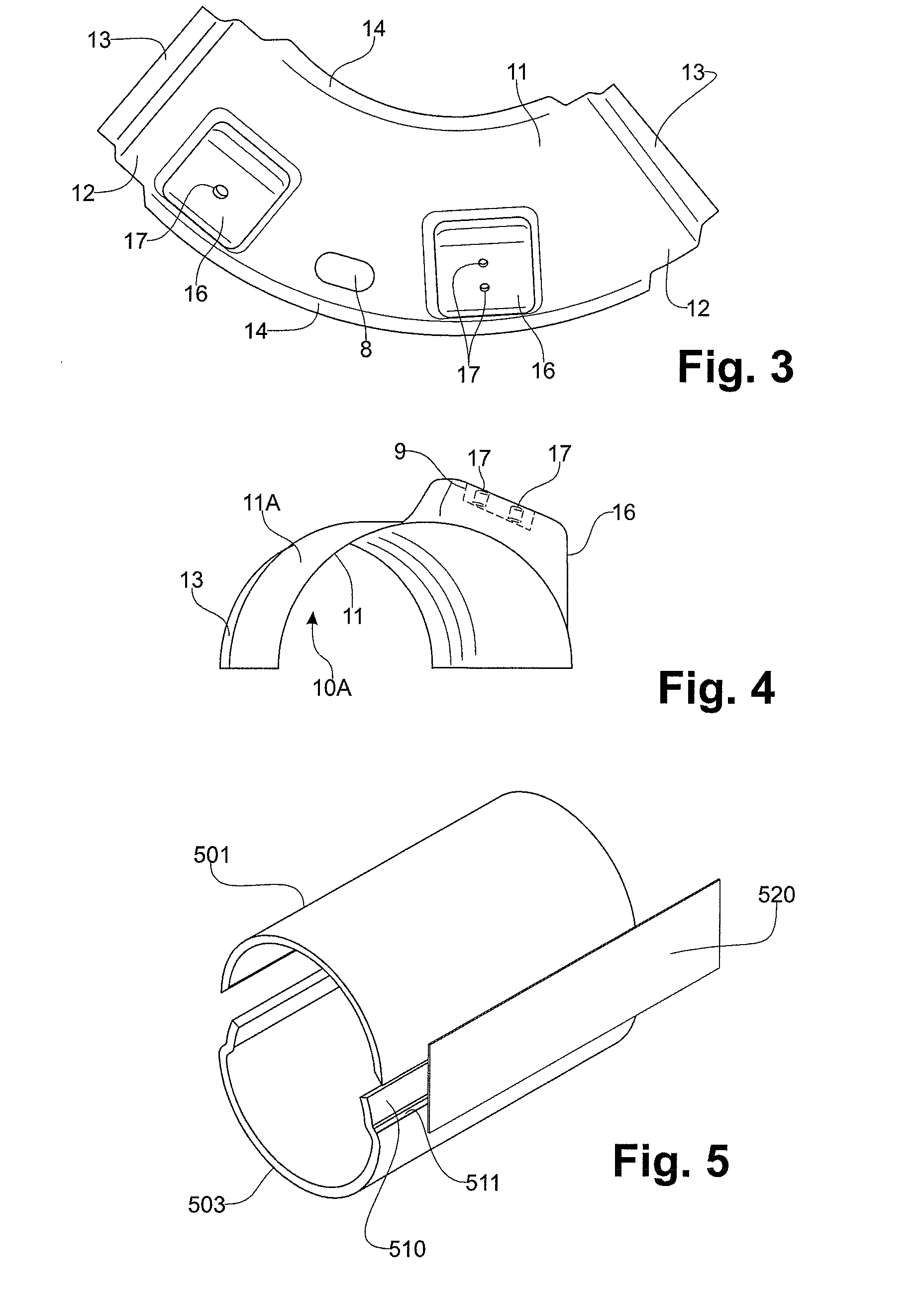Composite Protective Element for a Thermally Insulated Pipe
a protective element and thermal insulation technology, applied in the direction of pipe elements, rigid pipes, couplings, etc., can solve the problems of poor sealing between sections, leakage of pipes and their connections, loss of seal at the valve system,
- Summary
- Abstract
- Description
- Claims
- Application Information
AI Technical Summary
Benefits of technology
Problems solved by technology
Method used
Image
Examples
Embodiment Construction
[0039]FIG. 1 illustrates a protection element 1 according to the invention for the thermal insulation of pipes.
[0040]This protection element, with an open concavity 10A, forms a half shell. It is made of a composite material comprising a plastic binder such as an epoxy resin reinforced by fibers with thermal insulation properties such as glass fibers.
[0041]Such a half shell is designed to cover pipes by being assembled opposite a half shell with similar mechanical and insulating properties and generally an equivalent shape, to form a protective shell.
[0042]FIG. 2 represents a sectional view of a pipe 2 sandwiched between one half shell 1 of the invention and the complementary half shell 3, together making up a protective shell 4 around the pipe. Such a shell is for instance used for the thermal protection of the pipes used in aircraft, which convey air at a high temperature (up to 540° C.). The pipes are wrapped in thermal insulation 5 such as foam or insulating wool and covered by ...
PUM
 Login to View More
Login to View More Abstract
Description
Claims
Application Information
 Login to View More
Login to View More - R&D
- Intellectual Property
- Life Sciences
- Materials
- Tech Scout
- Unparalleled Data Quality
- Higher Quality Content
- 60% Fewer Hallucinations
Browse by: Latest US Patents, China's latest patents, Technical Efficacy Thesaurus, Application Domain, Technology Topic, Popular Technical Reports.
© 2025 PatSnap. All rights reserved.Legal|Privacy policy|Modern Slavery Act Transparency Statement|Sitemap|About US| Contact US: help@patsnap.com



